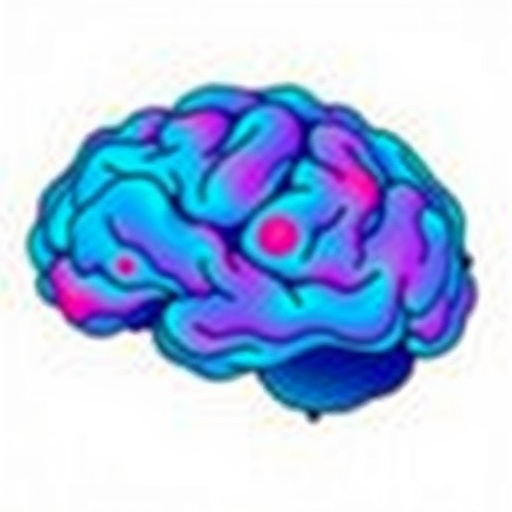In recent years, the field of sleep research has witnessed a surge in innovative methodologies aimed at unraveling the complexities surrounding sleep stages. The study conducted by Pouliou, Papageorgiou, Petmezas, and colleagues presents a pioneering approach that merges the computational power of Hidden Markov Models (HMM) with advanced electroencephalogram (EEG) signal processing techniques to enhance sleep stage identification. This remarkable synergy not only holds promise for improving sleep diagnostics but also paves the way for significant advancements in related healthcare applications.
Understanding the intricacies of sleep stages is crucial for diagnosing sleep disorders that affect a substantial portion of the population. With traditional methods often proving inadequate in accuracy and efficiency, the introduction of HMMs provides a transformative solution. HMMs are statistical models that allow researchers to make predictions about hidden states—in this case, the various stages of sleep—by analyzing observed data, which includes EEG signals. By applying this algorithm, researchers can decode the complex patterns inherent in the brain’s electrical activity during sleep, leading to more precise identification of sleep states.
The researchers’ methodology begins with a comprehensive collection of EEG data. This data, derived from multiple subjects, captures the nuanced fluctuations in brain activity associated with different sleep phases, including light sleep, deep sleep, and REM sleep. Once obtained, the data undergoes a rigorous preprocessing phase, ensuring that the signals are cleaned and artifacts are removed. This step is crucial, as any noise in the data could compromise the subsequent analysis and lead to incorrect stage identification.
The orchestration of HMMs in this context is particularly noteworthy. By modeling the sleep states as discrete entities, the researchers can visualize transitions between stages, reflecting the dynamic nature of sleep architecture. The incorporation of temporal dependencies in their approach allows for a more holistic understanding of sleep dynamics, addressing some of the limitations of previous methodologies that treated sleep stages as isolated events. The result is a significantly enhanced framework for analyzing sleep data, showcasing the capability of HMMs to yield more reliable sleep stage classifications.
Complementing the statistical framework of HMMs are sophisticated signal processing techniques employed in the study. The researchers utilize advanced algorithms capable of detecting specific features within the EEG signals, such as frequency components and oscillatory patterns. These features serve as vital cues, providing additional context that informs the HMM analysis. By integrating these signal processing techniques, the authors augment the model’s ability to discern subtle transitions between different sleep states, ultimately resulting in superior classification accuracy.
Moreover, the research highlights the importance of using machine learning frameworks in conjunction with traditional sleep analysis methods. By leveraging algorithms that can learn from vast datasets, the researchers not only enhance the robustness of sleep stage identification but also establish a foundation for future developments in automated sleep diagnostics. This alignment with machine learning principles suggests that the field is moving towards a paradigm where manual interpretation of sleep data may soon become obsolete.
As the implications of this study unfold, the potential applications span far beyond clinical settings. The advancements in sleep stage identification could play a crucial role in developing personalized sleep therapies tailored to individual needs. For instance, enhanced sleep tracking technologies, powered by the findings of this research, could enable users to monitor their sleep habits effectively and receive real-time feedback on their sleep stages. Such innovations could lead to improved sleep hygiene and better overall health outcomes.
Furthermore, the portable devices equipped with versions of these advanced algorithms could revolutionize the way sleep disorders are tracked and treated. Continuous monitoring of sleep stages could facilitate timely interventions and foster an environment where sleep health is prioritized. The accessibility of these tools may lead to a proactive approach, encouraging individuals to take charge of their sleep health long before significant issues arise.
The researchers also address the challenges encountered in integrating these advanced techniques into clinical practice. While the methodology shows great promise, establishing standardization in EEG signal collection and processing protocols will be essential for widespread implementation. Additionally, ensuring that professionals are adequately trained to interpret the complex outputs generated by such sophisticated models is crucial for maximizing the benefits derived from this research.
The findings presented in this study resonate with the broader movement within the medical community towards data-driven solutions. As healthcare transitions towards a more personalized approach, the ability to decode and understand individual sleep patterns could transform patient care. This journey towards tailored healthcare experiences extends to the integration of behavioral insights, creating a comprehensive model that addresses not just the biological aspects of sleep but also behavioral and environmental factors.
As the research community continues to explore the depths of sleep science, collaborations among interdisciplinary teams—comprising neuroscientists, engineers, and clinicians—will be pivotal in translating this research into practice. The fusion of expertise from different domains will undoubtedly bolster efforts to enhance sleep diagnostics and treatment strategies, ensuring that the wealth of knowledge gained informs real-world applications.
In conclusion, the work of Pouliou and colleagues stands as a testament to the potential of combining advanced signal processing techniques with robust statistical modeling in the realm of sleep research. Their research not only contributes to the existing body of knowledge but also charts a course for future innovations. As the field of sleep science continues to evolve, it is clear that approaches grounded in technological advancements will play an integral role in shaping the future of sleep health and overall wellness.
Subject of Research: Sleep stage identification using Hidden Markov Models and EEG signal processing.
Article Title: A New Approach for Sleep Stage Identification Combining Hidden Markov Models and EEG Signal Processing.
Article References:
Pouliou, A., Papageorgiou, V.E., Petmezas, G. et al. A New Approach for Sleep Stage Identification Combining Hidden Markov Models and EEG Signal Processing. J. Med. Biol. Eng. 45, 1–12 (2025). https://doi.org/10.1007/s40846-025-00928-5
Image Credits: AI Generated
DOI: https://doi.org/10.1007/s40846-025-00928-5
Keywords: Sleep research, Hidden Markov Models, EEG signal processing, sleep stage identification, machine learning, personalized sleep health.
Tags: advanced sleep diagnosticsbrain electrical activity during sleepcomplexities of sleep stages analysiscomprehensive EEG data collectiondecoding sleep states with algorithmsEEG signal processing techniquesenhancing accuracy in sleep studieshealthcare applications for sleep disordersHidden Markov Models in sleep researchinnovative sleep analysis methodologiessleep stage identification methodsstatistical models in neuroscience





